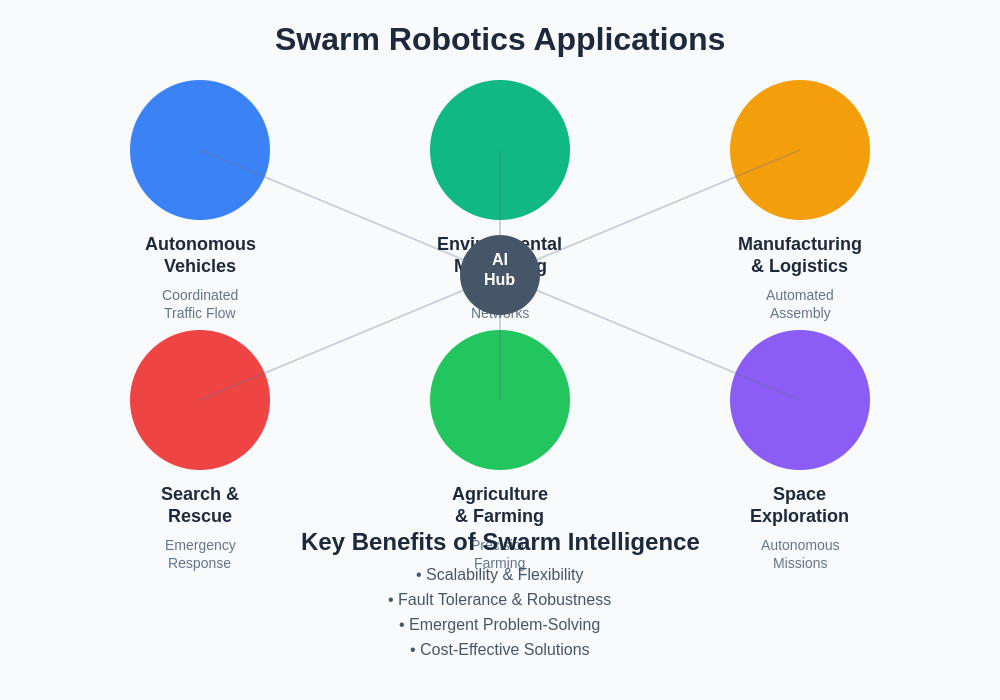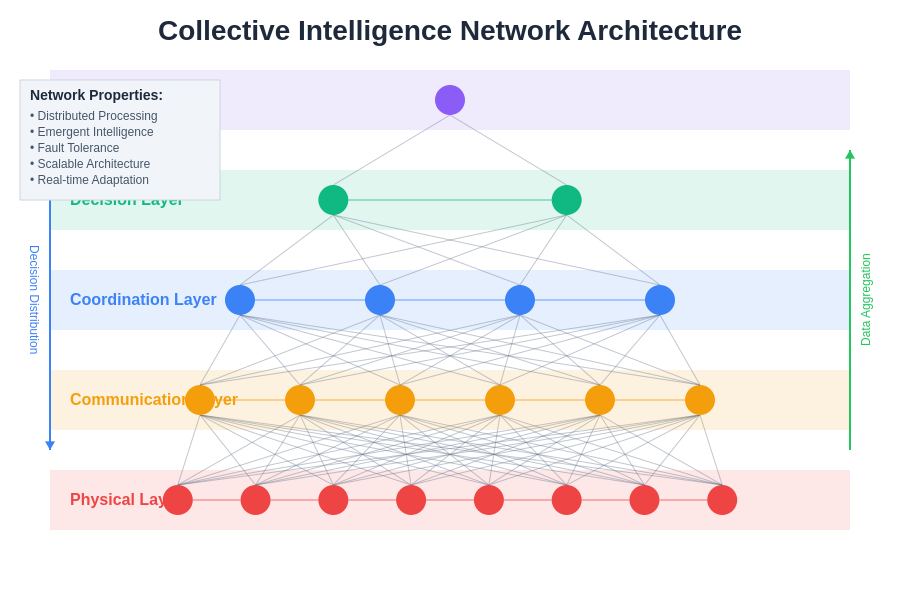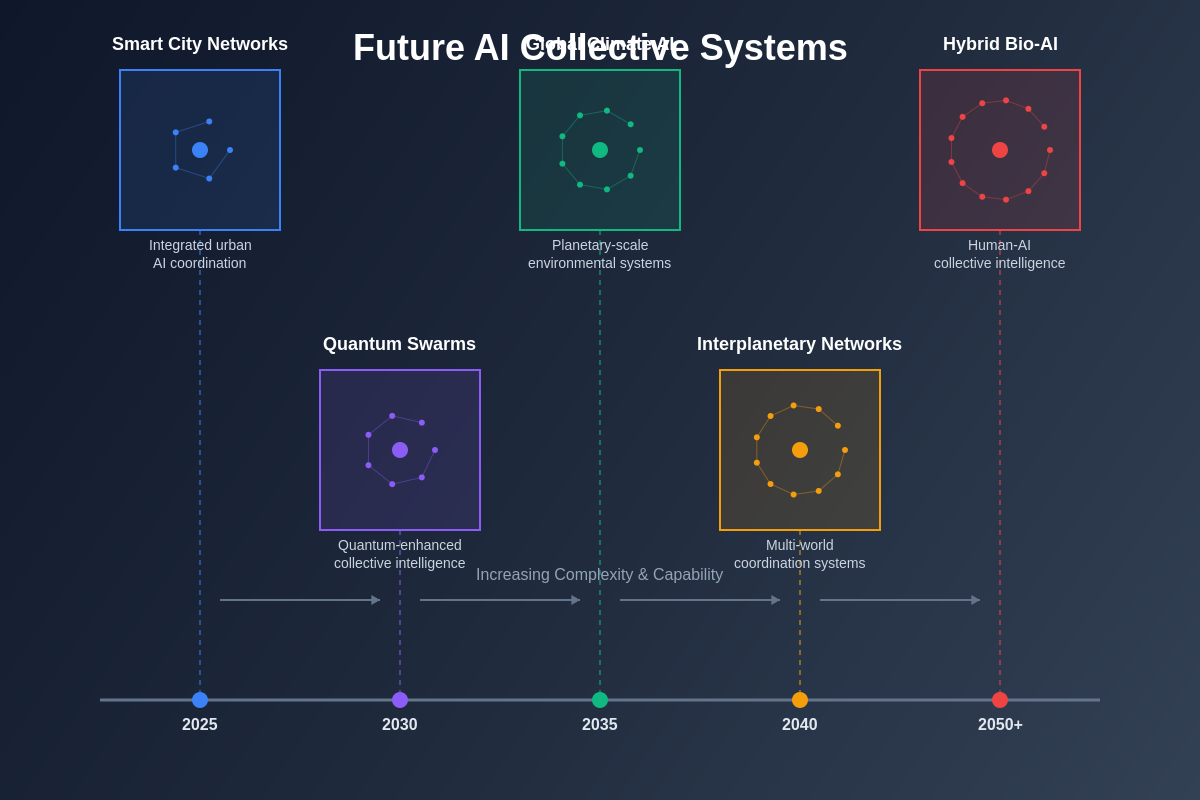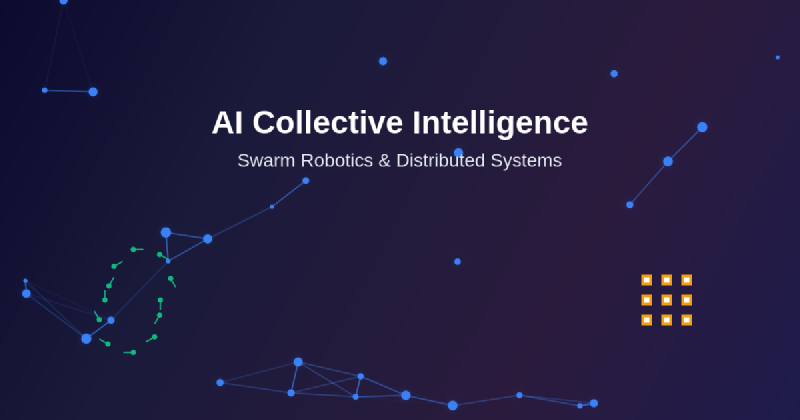The convergence of artificial intelligence with collective intelligence principles has given birth to one of the most fascinating and transformative fields in modern technology: swarm robotics and distributed AI systems. These sophisticated networks of interconnected agents work together to achieve complex objectives that would be impossible for individual units to accomplish, mimicking the extraordinary coordination seen in natural phenomena such as ant colonies, bird flocks, and bee swarms. This revolutionary approach to artificial intelligence represents a fundamental shift from centralized control systems to decentralized, adaptive networks that demonstrate emergent intelligence through collaborative behavior.
Discover the latest breakthroughs in AI technology and witness how collective intelligence is reshaping our understanding of what artificial systems can achieve when they work together. The implications of this technology extend far beyond academic research, promising to revolutionize industries ranging from logistics and manufacturing to environmental monitoring and space exploration.
Understanding Collective Intelligence in AI Systems
Collective intelligence in artificial systems represents the emergent cognitive capabilities that arise when multiple AI agents collaborate, communicate, and coordinate their actions to solve complex problems. Unlike traditional centralized AI architectures where a single powerful processor makes all decisions, collective intelligence systems distribute cognitive load across multiple agents, each contributing specialized capabilities while working toward common objectives. This distributed approach enables the system to exhibit behaviors and problem-solving capabilities that exceed the sum of individual agent capabilities.
The foundation of collective intelligence lies in the principles of emergence, where simple interactions between individual agents give rise to complex, intelligent behaviors at the system level. Each agent in the collective operates according to relatively simple rules and responds to local information, yet the aggregate behavior of the entire system demonstrates sophisticated coordination, adaptation, and learning capabilities that would be challenging to program explicitly into a centralized system.
This paradigm has proven particularly powerful in scenarios requiring real-time adaptation, fault tolerance, and scalability. When one or more agents fail or encounter obstacles, the collective can dynamically reorganize and redistribute responsibilities without requiring central intervention or system-wide reconfiguration. This resilience makes collective intelligence systems ideal for operating in unpredictable environments where traditional centralized systems might struggle.
The Biology-Inspired Foundation of Swarm Intelligence
The development of swarm robotics draws heavily from biological systems that have evolved sophisticated collective behaviors over millions of years. Ant colonies provide perhaps the most compelling example of decentralized intelligence, where thousands of individual ants coordinate complex tasks such as foraging, nest construction, and defense without any central planning authority. Each ant follows simple behavioral rules based on local chemical signals and environmental cues, yet the colony as a whole exhibits remarkable problem-solving abilities and adaptive responses to changing conditions.
Experience advanced AI reasoning capabilities with Claude to understand how biological principles can be translated into artificial systems that demonstrate similar emergent intelligence. The translation of these biological principles into artificial systems involves creating mathematical models and algorithms that capture the essential elements of natural swarm behavior while adapting them for technological applications.
Bird flocking behavior demonstrates another crucial aspect of collective intelligence: the ability to maintain cohesion and coordination while navigating complex three-dimensional environments. The simple rules of separation, alignment, and cohesion that govern individual bird behavior result in the fluid, adaptive movement patterns observed in large flocks. These principles have been successfully adapted to create autonomous vehicle coordination systems, drone swarms, and mobile robot networks that can navigate complex environments while maintaining formation and avoiding obstacles.
Fundamental Principles of Swarm Robotics
Swarm robotics systems operate according to several fundamental principles that enable effective collective behavior. Decentralization ensures that no single robot serves as a central controller, making the system inherently fault-tolerant and scalable. Each robot makes decisions based on local information gathered through sensors and communication with nearby neighbors, creating a distributed decision-making network that can respond rapidly to local conditions while maintaining global coherence.
Self-organization represents another crucial principle, enabling swarm systems to spontaneously develop structured behaviors and role assignments without explicit programming or external control. Through interaction with the environment and other robots, the swarm can dynamically allocate tasks, form subgroups for specialized functions, and adapt its organizational structure to meet changing objectives or environmental conditions.
Stigmergy, the concept of indirect coordination through environmental modification, plays a vital role in many swarm robotics applications. Robots can leave traces or markers in their environment that influence the behavior of other robots, creating a form of distributed memory and communication system. This principle enables complex coordination patterns to emerge from simple local interactions, allowing swarms to solve problems such as path optimization, area coverage, and resource allocation efficiently.
Multi-Agent Coordination Mechanisms
Effective coordination in multi-agent systems requires sophisticated communication and synchronization mechanisms that enable agents to share information, negotiate tasks, and maintain coherent collective behavior. Communication protocols in swarm systems must balance the need for information sharing with bandwidth limitations and the requirement for real-time responsiveness. Many systems employ hierarchical communication strategies where agents primarily communicate with nearby neighbors while occasionally sharing critical information across the entire network.
Task allocation in multi-agent systems involves dynamic distribution of responsibilities based on agent capabilities, current system state, and environmental conditions. Advanced allocation algorithms can optimize for various objectives such as energy efficiency, completion time, or resource utilization while adapting to agent failures or changing requirements. These systems often employ auction-based mechanisms, consensus algorithms, or distributed optimization techniques to achieve fair and efficient task distribution.
Consensus mechanisms enable distributed agents to agree on shared states, decisions, or actions despite operating with incomplete information and potential communication delays. Byzantine fault tolerance algorithms ensure that the system can reach consensus even when some agents provide incorrect information or fail entirely, making these systems robust enough for critical applications in unpredictable environments.
Applications in Autonomous Vehicle Networks
The automotive industry has embraced collective intelligence principles to develop sophisticated autonomous vehicle networks that can coordinate traffic flow, optimize routing, and enhance safety through vehicle-to-vehicle communication. These systems enable individual vehicles to share information about road conditions, traffic patterns, and potential hazards, creating a collective awareness that exceeds what any single vehicle could achieve through its sensors alone.
Platoon formation represents one of the most promising applications of swarm intelligence in transportation, where multiple vehicles coordinate their movements to travel in close formation while maintaining safety and efficiency. This approach can significantly reduce aerodynamic drag, improve fuel efficiency, and increase road capacity while providing enhanced safety through coordinated braking and maneuvering responses.
Traffic optimization through collective intelligence extends beyond individual vehicle coordination to encompass entire transportation networks. Smart traffic management systems can dynamically adjust signal timing, recommend alternative routes, and coordinate with autonomous vehicles to minimize congestion and reduce travel times across urban environments.
Environmental Monitoring and Sensor Networks
Environmental monitoring applications represent another significant domain for collective intelligence systems, where networks of autonomous sensors and mobile platforms collaborate to gather comprehensive data about ecological systems, climate conditions, and environmental changes. These distributed monitoring systems can adapt their sensing strategies based on detected patterns, deploy additional resources to areas of interest, and maintain continuous surveillance despite equipment failures or changing conditions.
Enhance your research capabilities with Perplexity to stay informed about the latest developments in environmental monitoring technologies and their applications in climate research and conservation efforts. Underwater swarm systems have proven particularly valuable for ocean monitoring, where networks of autonomous underwater vehicles can coordinate to study marine ecosystems, track migration patterns, and monitor water quality across vast oceanic regions.
Forest fire monitoring and disaster response systems leverage collective intelligence to deploy sensor networks and mobile platforms that can detect emerging threats, coordinate response efforts, and maintain communication in challenging environments. These systems can autonomously reposition resources, establish communication relays, and adapt their monitoring strategies based on changing conditions and threat levels.
Industrial Manufacturing and Logistics
Manufacturing industries have increasingly adopted collective intelligence principles to create flexible, adaptive production systems that can respond to changing demands and optimize resource utilization. Swarm robotics applications in manufacturing include coordinated assembly operations, autonomous material handling, and dynamic reconfiguration of production lines based on product requirements and equipment availability.
Warehouse automation represents a mature application of collective intelligence, where fleets of autonomous robots coordinate to fulfill orders, manage inventory, and optimize storage layouts. These systems can dynamically balance workloads, adapt to changing product demands, and maintain operations despite individual robot maintenance or failures.
Supply chain optimization through collective intelligence extends coordination across entire logistics networks, enabling real-time adaptation to demand fluctuations, transportation delays, and supply disruptions. These systems can automatically reroute shipments, adjust inventory levels, and coordinate with multiple stakeholders to maintain efficient operations despite complex interdependencies and uncertainties.
Search and Rescue Operations
Emergency response scenarios provide compelling applications for collective intelligence systems, where coordinated teams of robots can search large areas, locate survivors, and provide assistance in dangerous environments that would be hazardous for human responders. These systems must operate effectively despite communication limitations, equipment failures, and rapidly changing conditions typical of disaster scenarios.
Search pattern optimization enables robot swarms to efficiently cover large areas while avoiding redundant coverage and adapting to terrain constraints and obstacle distributions. Advanced coordination algorithms can dynamically adjust search strategies based on discovered evidence, environmental conditions, and available resources to maximize the probability of successful rescue operations.
Communication relay establishment represents a critical capability in disaster response, where robot swarms can automatically deploy to create communication networks that enable coordination between rescue teams and provide connectivity in areas where traditional infrastructure has been damaged or destroyed.

The diverse applications of swarm robotics demonstrate the versatility and potential of collective intelligence systems across multiple domains. From autonomous vehicle coordination to environmental monitoring and emergency response, these systems provide robust, scalable solutions that can adapt to complex and dynamic operating environments.
Distributed Computing Architectures
The computational infrastructure supporting collective intelligence systems requires sophisticated distributed architectures that can handle real-time coordination, data sharing, and decision-making across networks of autonomous agents. Edge computing plays a crucial role in these systems by enabling local processing and decision-making capabilities that reduce latency and bandwidth requirements while maintaining responsiveness to local conditions.
Distributed consensus algorithms ensure that agents can reach agreement on shared states and decisions despite operating with partial information and potential communication failures. These algorithms must balance the need for consistency with performance requirements and fault tolerance, often employing techniques such as blockchain-inspired consensus mechanisms or gossip protocols for information dissemination.
Load balancing and resource allocation in distributed systems become particularly complex when dealing with heterogeneous agents with different capabilities and constraints. Dynamic allocation algorithms must consider factors such as computational capacity, energy limitations, communication bandwidth, and task requirements to optimize overall system performance while maintaining fairness and preventing resource starvation.
Machine Learning in Collective Systems
Machine learning techniques have become integral to modern collective intelligence systems, enabling agents to adapt their behavior based on experience and changing environmental conditions. Distributed learning approaches allow individual agents to contribute to shared knowledge while maintaining privacy and reducing communication overhead through techniques such as federated learning and distributed gradient descent.
Reinforcement learning in multi-agent environments presents unique challenges due to the non-stationary nature of the learning environment, where the behavior of other agents continuously changes as they also adapt and learn. Advanced algorithms address these challenges through techniques such as multi-agent policy gradients, cooperative learning, and opponent modeling that enable stable learning in dynamic collective environments.
Emergent behavior discovery through machine learning enables systems to develop novel coordination strategies and problem-solving approaches that may not have been explicitly programmed. These emergent behaviors often demonstrate remarkable efficiency and robustness, sometimes discovering solutions that surpass human-designed coordination strategies.
Communication Protocols and Network Topologies
Effective communication in collective intelligence systems requires carefully designed protocols that can handle the unique challenges of multi-agent coordination, including bandwidth limitations, message delays, and potential communication failures. Adaptive communication strategies enable systems to adjust their communication patterns based on network conditions, task requirements, and available resources.
Network topology optimization involves determining the most effective communication patterns for different scenarios, balancing factors such as information propagation speed, network resilience, and communication overhead. Dynamic topologies can adapt to changing conditions by establishing new connections, removing redundant links, or reconfiguring communication hierarchies based on current needs.
Quality of service guarantees in multi-agent communication systems ensure that critical coordination messages receive priority handling while maintaining overall network performance. These systems often employ techniques such as message prioritization, adaptive routing, and congestion control to maintain reliable communication despite varying network loads and conditions.

The intricate network structures that enable collective intelligence demonstrate the sophisticated communication and coordination mechanisms required to support distributed decision-making and emergent behaviors in artificial systems.
Challenges and Limitations
Despite the remarkable capabilities of collective intelligence systems, several significant challenges limit their broader adoption and effectiveness. Scalability remains a primary concern, as coordination complexity often increases exponentially with the number of agents, leading to communication bottlenecks and decision-making delays in very large systems. Current research focuses on developing hierarchical coordination structures and efficient communication protocols that can maintain performance as system size grows.
Fault tolerance and robustness present ongoing challenges, particularly in safety-critical applications where system failures could have serious consequences. While distributed systems inherently provide some resilience through redundancy, designing systems that can gracefully handle cascading failures, malicious agents, or coordinated attacks requires sophisticated detection and recovery mechanisms.
Security and privacy concerns become particularly complex in collective intelligence systems where agents must share information to coordinate effectively while protecting sensitive data and preventing unauthorized access or manipulation. Balancing transparency requirements for coordination with privacy protection and security measures represents an ongoing research challenge.
Future Directions and Emerging Technologies
The future of collective intelligence systems promises exciting developments in several key areas. Quantum computing integration may enable new forms of collective quantum intelligence where quantum entanglement and superposition properties create novel coordination mechanisms and computational capabilities that exceed classical distributed systems.
Brain-computer interface integration could enable hybrid biological-artificial collective intelligence systems where human cognitive capabilities combine with artificial agent coordination to create unprecedented problem-solving capabilities. These systems might leverage human intuition and creativity while benefiting from artificial agent precision and scalability.
Space exploration applications represent a frontier where collective intelligence systems could enable autonomous exploration missions involving coordinated spacecraft, rovers, and orbital platforms that can adapt to unknown environments and maintain operations across vast distances with minimal Earth-based control.
Economic and Societal Implications
The widespread adoption of collective intelligence systems will have profound economic and societal implications that extend far beyond their immediate technical applications. Labor market disruption may occur as autonomous systems take over tasks traditionally performed by human teams, requiring careful consideration of retraining programs and economic transition strategies to ensure that technological advancement benefits society broadly.
Regulatory frameworks will need to evolve to address the unique challenges posed by distributed autonomous systems, including liability assignment, safety certification, and ethical guidelines for systems that can make decisions and take actions without direct human oversight. International cooperation will be essential to develop consistent standards and prevent regulatory fragmentation that could hinder beneficial applications.
Economic efficiency gains from collective intelligence systems could revolutionize industries by dramatically reducing operational costs while improving service quality and reliability. However, these benefits must be balanced against potential job displacement and the need for equitable distribution of economic gains from increased automation.

The vision of future AI collective intelligence systems encompasses unprecedented scales of coordination and capability, from planetary-scale environmental monitoring networks to interplanetary exploration missions that operate autonomously across the solar system.
Ethical Considerations and Governance
The development and deployment of collective intelligence systems raise important ethical questions that require careful consideration and proactive governance approaches. Accountability and responsibility become complex issues when decisions emerge from collective processes rather than individual agents or human operators. Establishing clear frameworks for determining responsibility and liability in distributed autonomous systems will be crucial for their acceptance and safe deployment.
Algorithmic bias in collective systems presents unique challenges since bias can emerge not only from individual agent programming but also from the collective behaviors and decision-making processes that arise from agent interactions. Ensuring fairness and preventing discrimination in collective intelligence systems requires comprehensive approaches that address both individual agent behavior and emergent collective properties.
Privacy protection in systems where information sharing is essential for coordination requires innovative approaches that can maintain the benefits of collective intelligence while protecting individual privacy rights. Techniques such as differential privacy, secure multi-party computation, and federated learning offer promising approaches to this challenge.
The development of collective intelligence systems represents one of the most significant advances in artificial intelligence, offering unprecedented capabilities for solving complex problems through distributed coordination and emergent behaviors. As these systems continue to evolve and mature, they promise to transform industries, enable new applications, and provide solutions to some of humanity’s most pressing challenges. However, realizing this potential will require continued research into technical challenges, thoughtful consideration of ethical implications, and careful development of governance frameworks that ensure these powerful technologies benefit society while minimizing potential risks.
The future of collective intelligence lies not in replacing human intelligence but in creating hybrid systems that leverage the unique strengths of both artificial and human agents. By combining the precision, scalability, and tireless operation of artificial systems with human creativity, intuition, and ethical reasoning, we can develop collective intelligence systems that amplify human capabilities while maintaining human agency and values in an increasingly automated world.
Disclaimer
This article is for informational purposes only and does not constitute professional advice. The views expressed are based on current understanding of AI technologies, collective intelligence, and swarm robotics. Readers should conduct their own research and consider their specific requirements when implementing distributed AI systems. The effectiveness and safety of collective intelligence applications may vary depending on specific use cases, environmental conditions, and implementation approaches. Always consult with qualified experts when developing or deploying autonomous systems in critical applications.
